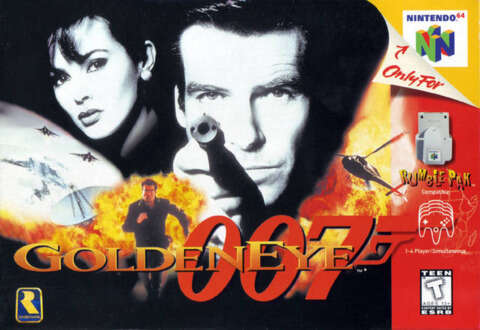Super Mario Bros. Wonder: The First Preview
Super Mario Bros. Wonder is, by Nintendo’s own admission during a presentation prior to my one-hour hands-on, the first major new 2D Mario game in a decade. It captures the same joyousness as the original NES trilogy did, and it surprises in its own unique ways too, thanks to the Wonder seeds that anchor the gameplay. It also exhibits Nintendo’s biggest commitment to multiplayer – yes, including online multiplayer – in the history of any Mario game, 2D or 3D. Even the small piece I got to experience has me ready to put aside every other one of the many, many big blockbuster games due out in October alongside Wonder so that I can focus on Nintendo’s latest Super Mario adventure.
The first thing I have to say isn’t news to you if you’ve watched the first Wonder trailer (see below), but the first thing that makes the latest mainline SMB game so captivating is how alive it feels. The vivid color palette, the constant animations Mario has going on – both big and small – and of course the music all bring a kinetic energy to this new Mario adventure that simply brought a smile to my face as I played. The fact that this is the Flower Kingdom rather than the Mushroom Kingdom also adds to the welcome visual uniqueness of Wonder.
The biggest new gameplay hook is the Wonder seeds: hidden pickups in each stage that have transformative and unpredictable effects on the gameplay. In one, a herd of Bulrushes stampeded across the screen, inviting me to ride them like a wave and collect coins as we ran by them before they charged through the exit pole and just kept running, thereby unlocking an alternate ending to the stage. In another, my co-op companions and I inflated into giant round balloons, not unlike a combination of Violet Beauregarde and Charlie Bucket in the original Willy Wonka and the Chocolate Factory, floating our way up the screen and collecting coins as we bounced off the walls and rose higher and higher.
And the final level I played had me and my two fellow local co-op players trying to sneak by Maw-Maws, sleepy wide-mouthed creatures who, when alerted, open their giant mouths up to cartoonishly large proportions and will swallow you whole if you’re in front of them. But we weren’t just trying to sneak past them. We were sneaking past them while playing as Goombas, and thus unable to jump or attack. It’s this spice of variety and unexpected joy that has always made me adore the mainline Mario games, be they 2D or 3D.
Badges are also new and let you choose either an active or passive powerup (bound to the Y button) before each stage. An example of the former is the Parachute Cap that lets Mario float down gently from jumps, while the list of the latter includes a water or lava escape that will automatically bounce you out of a liquid hazard. Any badge can be attached to any of the 12 familiar characters on the roster – all of which are unlocked right from the start – from Mario to Peach to Daisy to Yoshi to Nabbit.
Naturally, there are fresh power-ups as well. My favorite was the Drill Mushroom, which gives you a drill bit for a hat and lets you burrow into the ground, walls, or ceiling to reach otherwise impossible places in order to access secrets or coins. Another lets you blow bubbles for other players to jump off of or put enemies to sleep.
Wonder also evolves 2D Mario multiplayer in new and interesting ways. First, Nintendo is giving us online play for up to four players, with a limit of two per console – though you can have Friend Rooms with up to a dozen pals in them, freeing groups of four to go wander off together. Meanwhile, any stage can be turned into a race, should all the players agree. And you can activate Persistent Online mode anytime, which will allow for random matchmaking. You can also place Standees anywhere in the course that grants fellow players a revive point if they die. Shops are scattered throughout the overworlds that allow you to buy new Standees as well as new Badges.
Super Mario Bros. Wonder may have a unique name, unattached to any other games in the series’s long and decorated history, but after playing an hour of it, I think Nintendo could’ve gotten away with calling it Super Mario Bros. 4, and all of the weight of expectations that would’ve come with that. (Yes, Super Mario World was arguably Super Mario Bros. 4, but you get my point…)
For more, don’t miss Wonder’s director and producer discussing the genesis of Wonder’s gameplay hook, why online multiplayer had to be “stress-free” for players, and how Mario creator Shigeru Miyamoto didn’t like Elephant Mario’s original design.
Ryan McCaffrey is IGN’s executive editor of previews and host of both IGN’s weekly Xbox show, Podcast Unlocked, as well as our monthly(-ish) interview show, IGN Unfiltered. He’s a North Jersey guy, so it’s “Taylor ham,” not “pork roll.” Debate it with him on Twitter at @DMC_Ryan.
Check out our Latest News and Follow us at Facebook
Original Source







